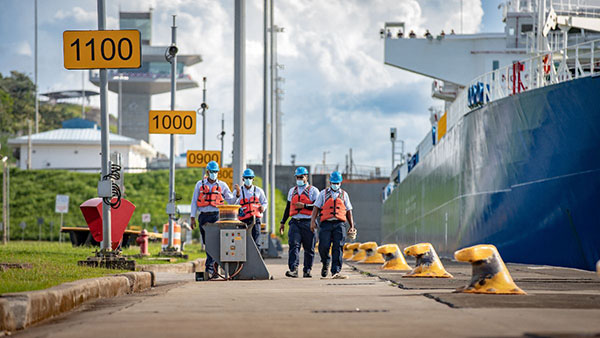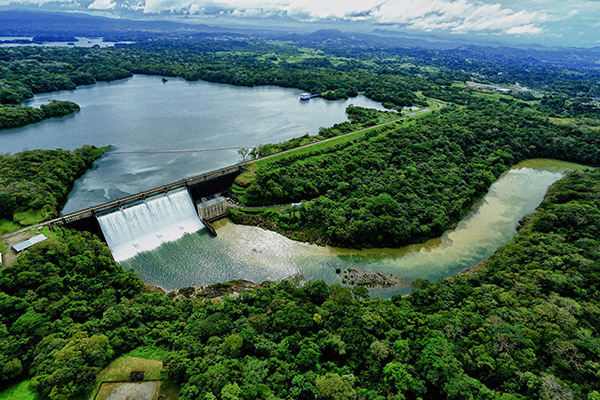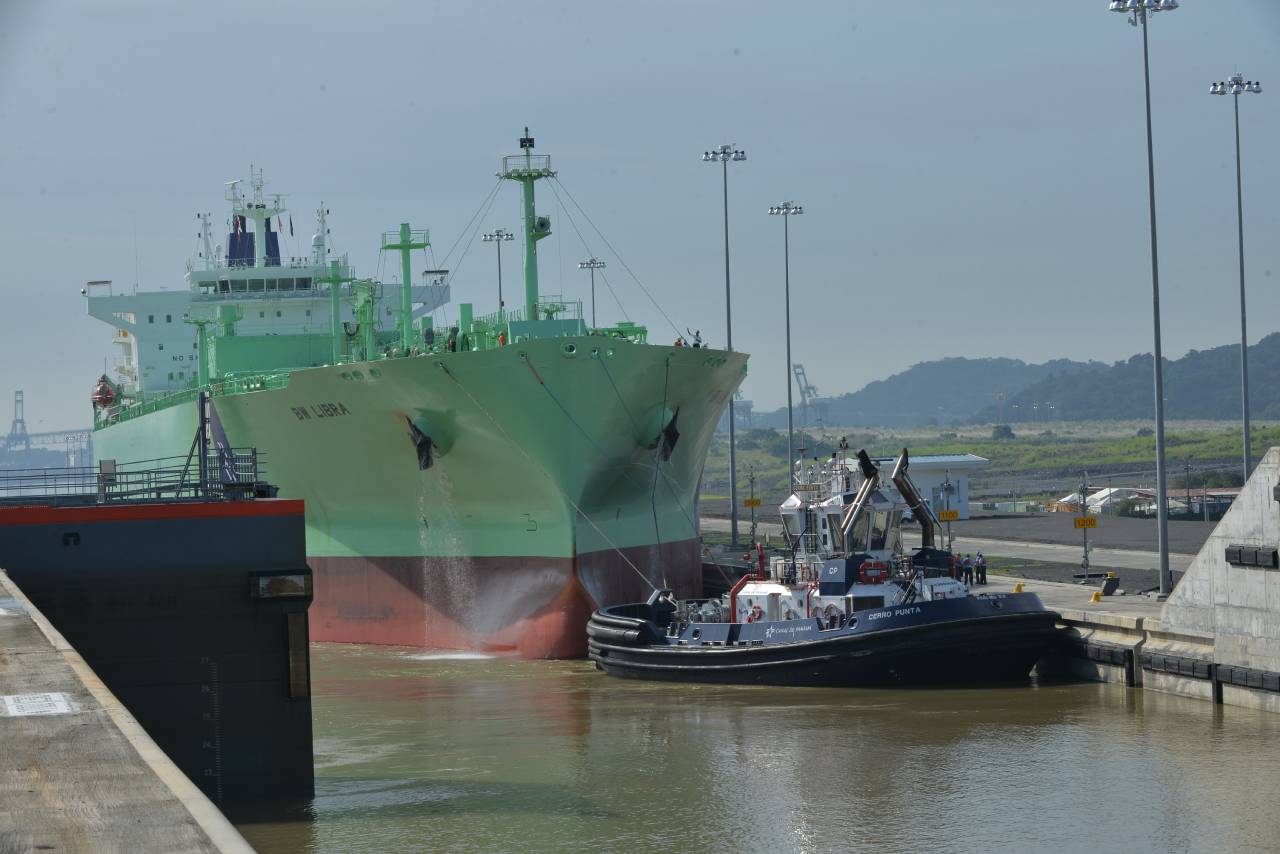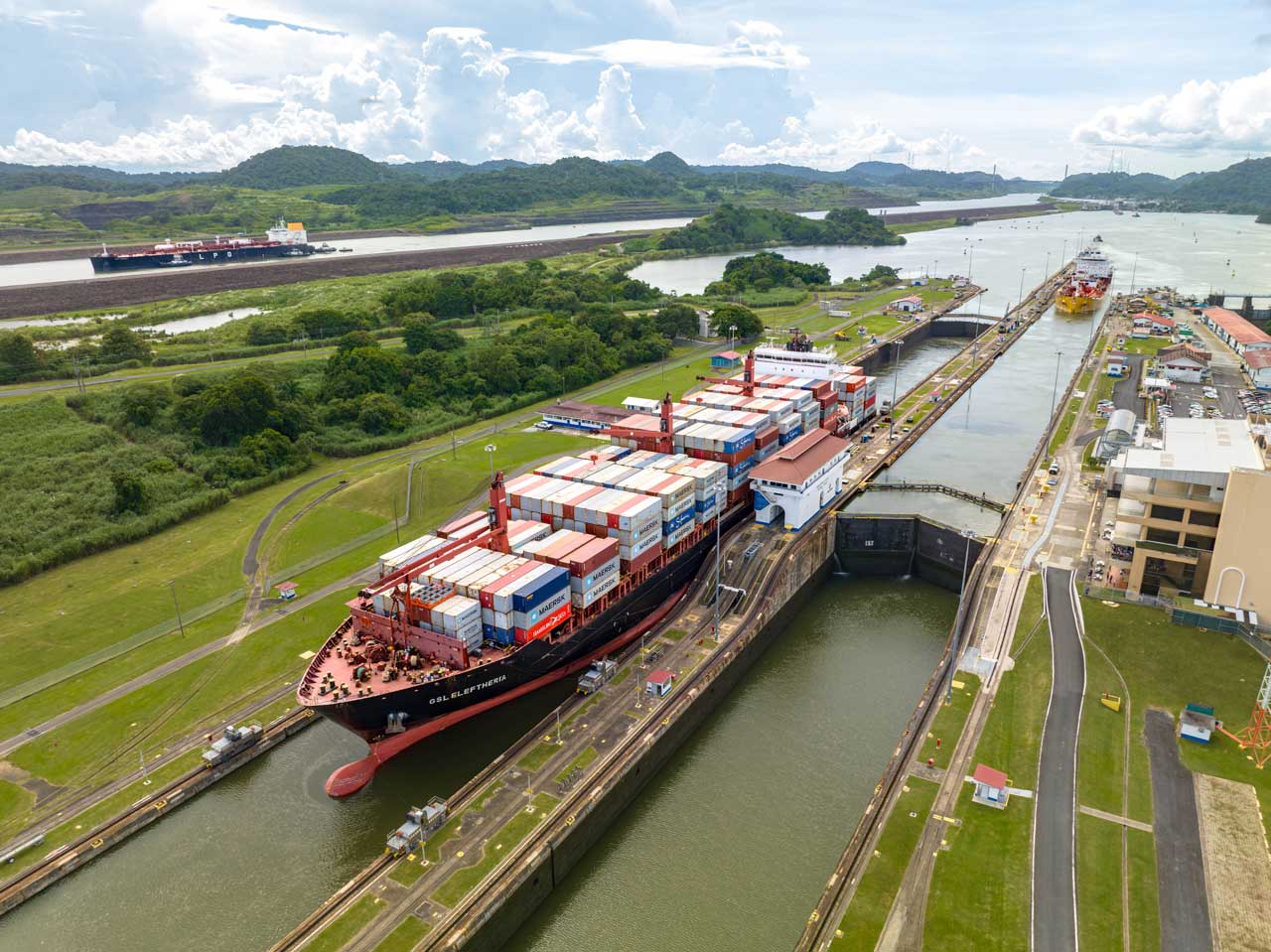This month marks the end of another record-breaking year at the Panama Canal – no simple feat – given the challenges it faced, from global supply chain disruptions to the continued effects of the COVID-19 pandemic on the global economy. Behind the waterway’s uninterrupted service stood a world-class team, who worked tirelessly to ensure the waterway remained safe and prepared for whatever the future may have in store for it next.

To celebrate the end of the year, Panama Canal leaders were asked to reflect on the waterway’s top achievements from the past year, as well as what they have in store for 2022.
Operations
Although global trade began its resurgence in 2021, the Panama Canal kept its operations teams as agile as possible, given the pandemic’s unpredictable impacts on traffic thus far. The team made prompt adjustments to accommodate the unprecedented surge in demand. In February, the Canal modified its transit reservation system and other maritime services to adapt its service and better manage its capacity in the face of fast-growing market conditions. The Canal also began offering an auction booking slot for the Panamax and Neopanamax Locks to help alleviate waiting times and offer additional booking options and flexibility for customers.
By October, the Panama Canal celebrated a record-breaking year of transits. “Our achievements in 2021 were made possible by our team’s dedication to understanding our customer’s shifting needs. As they shifted, we listened and evolved our service accordingly, while continuing to keep health and safety as a top priority,” said Ilya Espino de Marotta, Deputy Administrator of the Panama Canal. “We look forward to accommodating even more transits for our customers in the New Year, with containership, liquefied natural gas and liquefied petroleum gas transits already expected to drive growth in 2022.”
Sustainability
Accelerating the Panama Canal’s transition to carbon neutrality will also be a key priority across the waterway’s teams in the coming year, building off the waterway’s fast-growing sustainability initiatives. In just the past year, the waterway launched its CO2 Emissions Savings Dashboard, a tool for calculating the carbon dioxide (CO2) emissions saved by vessels that transit the Panama Canal, compared to the most likely alternative route, which found that vessels saved more than 13 million tons of CO2 emissions by opting for the Panama Canal route in 2020.
This past year, the Panama Canal also signed the Call to Action for Shipping Decarbonization with 150 maritime organizations, contributed to the UN Global Compact’s Charting a 1.5 C Trajectory for Maritime Transport, and gave a presentation on sustainable maritime routes at 2021 United Nations Climate Change Conference (COP26).
In 2022, the waterway will advance its to becoming carbon neutral by 2030, with plans already underway to invest roughly $2.4 billion in modernizing its equipment and infrastructure to meet this commitment. For the operations team, initial next steps include adopting 10 hybrid tugboats, with the option of purchasing another 10, which will reduce tugboat operational carbon emissions by 20 percent. The Canal will also introduce a fleet of electric vehicles, among other measures.
“Our goal is to begin a series of investments that maximize the value we can offer our community, customers and world as a green route and corridor for world trade,” said Victor Vial, Vice President of Finance. “By fortifying our infrastructure, technology and equipment, we can meet this challenge and ensure we continue to deliver the safe, efficient and reliable service we have been delivering for over 100 years.”

Infrastructure & Engineering
Maintaining and modernizing the infrastructure of the Canal is no small mission. Over 100 maintenance projects are conducted in a typical year to preserve infrastructure and equipment.
To proactively plan, monitor and execute projects more efficiently, Miguel Lorenzo, Vice President of Infrastructure and Engineering and his team spent the past few months reviewing and optimizing the waterway’s investment portfolio to determine new ways to carry out equipment acquisition, improvement and replacement projects. According to Mr. Lorenzo, 2021 marked the start of a series of organizational changes that will “fundamentally change” the way the Canal’s physical assets are managed over the coming years, with landmark investments planned for 2022 that will guarantee the long-term sustainability of the Canal.
“We are carrying out exhaustive evaluations of the conditions of our infrastructure, especially the oldest, to define the needs of attention in the short, medium and long term,” he said. “In parallel with this, we will be evaluating and executing those projects that aim to maintain the Canal’s social and environmental license, especially those aligned with our declaration of being a neutral entity in greenhouse gas emissions by 2030.”
Digital Transformation
The design and implementation of the Panama Canal´s digital transformation vision and high-level roadmap was another strategic endeavor in 2021 that will continue into the coming years. According to Antonio Córdoba, Vice President of Digital Transformation, “going digital” is essential for the Canal as it will “evolve our organization to a new stage of innovation and will keep us relevant, transparent, and successful.”
As part of this initial process, Mr. Córdoba and his team completed the following: priorities determination and digital breach analysis, new ways of working to be adopted, the data and analytics roadmap, the people and cultural transformation journey, among other components of the overall Digital Transformation strategy. “We also defined, at high level, our internal IT evolution journey, which will allow us to support the organization in our acceleration towards the digital future.”
Moving forward, the team anticipates a strong focus on scaling its organizational agility, as well as a move towards new digitalized and improved processes. These shifts will then bring increased operational efficiency at all levels. “An incremental usage of data in ways we had never before, thanks to new technologies we are implementing, will allow the organization to discover new business insights, improve precision in forecasting and predictability, and make better data driven decisions in 2022,” said Mr. Cordoba. “We will prioritize updating our IT baseline infrastructure and systems, in a sustainable and consistent way, to be able to face the new era of transformation and technology changes.”

Water
The Panama Canal is also advancing investments that will redefine its water use for the next 50 years, while making steady progress in the short-term.
A year after introducing water measures, the Panama Canal offered a maximum draft of 50 feet at the Neopanamax Locks in 2021, the highest allowed at the waterway. Achieved through effective water management and an increase in rainfall, the higher draft ultimately increased the waterway’s capacity to maneuver larger and heavier vessels, a trend expected to continue in 2022.
The Panama Canal, meanwhile, made progress on its search for a long-term water solution, reaching an agreement in November with the US Corps of Engineering (USACE) for developing an economically justified and environmentally sustainable integrated water resource management plan. John D. Langman, Vice President of Water Projects, confirmed that the plan will cover “specific measures to maximize the yield of water resources within the Panama Canal watershed and potentially includes complementary solutions integrated from outside of the Canal´s watershed, resulting in increased operational reliability and resiliency of the system.” He added that the agreement will also encompass “a recognition, feasibility studies, and tender support phases to prepare design build solicitations for the solutions selected, as well as capacity building throughout the process.”
In 2022, Mr. Langman and his Panama Canal team will work alongside USACE experts to advance project management, engineering, hydrologic, water quality and other elements during the recognition and feasibility phases related to the reached agreement.
Strategic Vision
Measures to secure water in 2021 also offered invaluable lessons that will be applied in the coming year.
“After implementing the freshwater surcharge and hearing from customers over the past few months, we recognized the value of offering a dynamic price, based on market,” said the Panama Canal Administrator, Ricaurte Vásquez Morales. “We are therefore working with our customers to develop a new simplified pricing strategy that provides them more visibility and transparency while also safeguarding the competitiveness of our route.”
According to the Administrator, “transparency and close communication with customers from across the Panama Canal’s team proved essential to the waterway’s overall success in 2021. At the end of the day, our legacy depends on our ability to sustainably create, capture, and render value for our customers, which we can only achieve together.”




